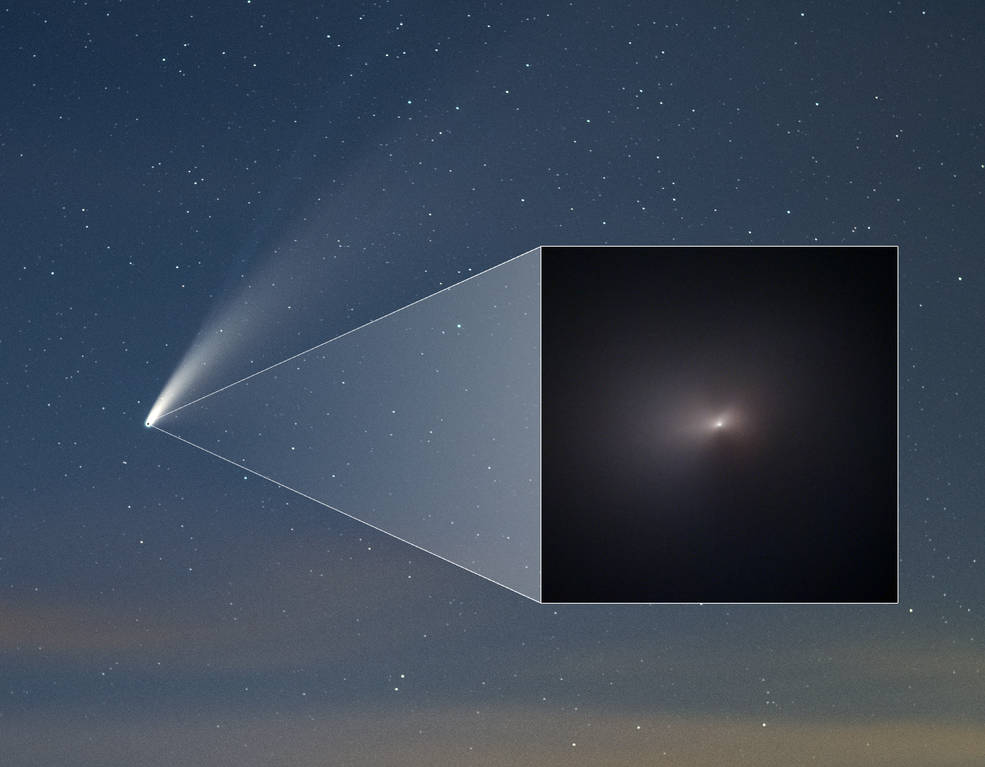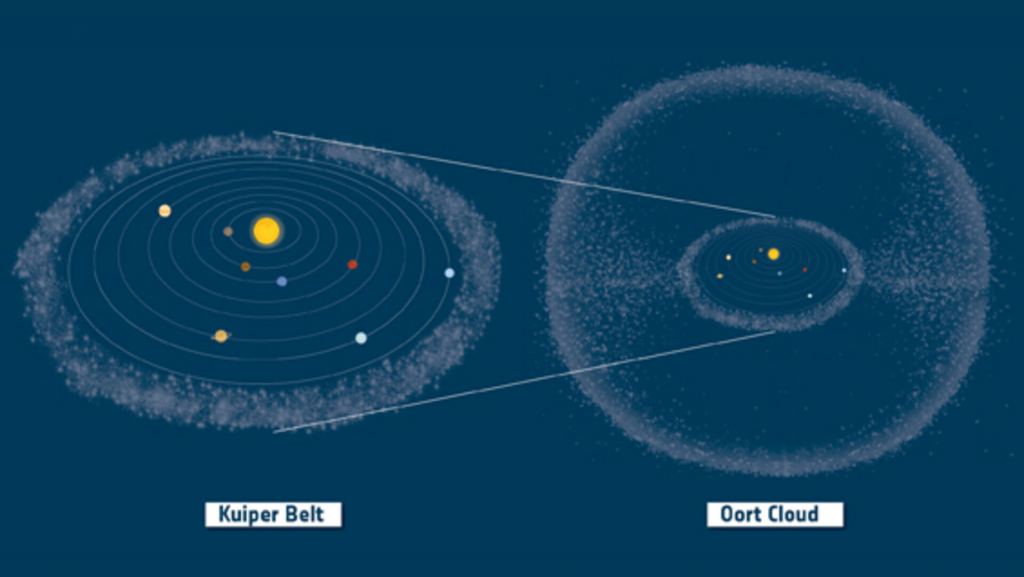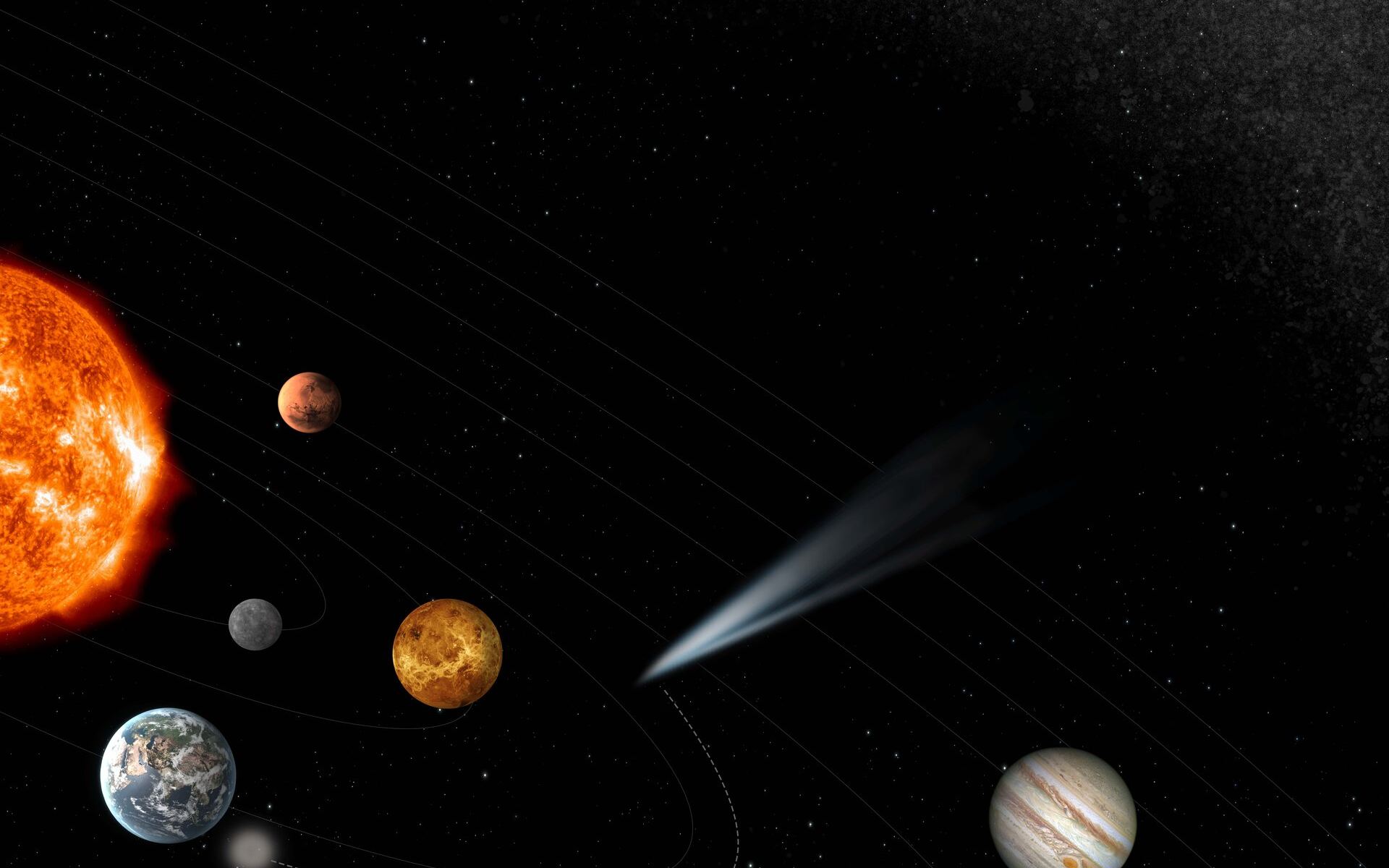Comets, with their long, beautiful, bright tails of ice, are some of the most spectacular sightings in the night sky. This was most apparent when Comet NEOWISE passed by Earth in the summer of 2020, dazzling viewers from all over the planet while being mainly visible in the northern hemisphere. Even though the sky might look the same night after night, comets are a humble reminder that the universe is a very active and beautiful place.

Comets are remnants of a time long past, and by long past we mean a very long past, as they are frozen leftovers from the formation of the solar system. While we are fortunate to see them as dazzling spectacles, they don’t start off this way. Comets are snowballs of frozen gases, rock, and dust orbiting in the edge of the solar system known as the Kuiper Belt where it is hypothesized that billions of comets likely exist. Every so often, one of their orbits brings it close to the Sun where it heats up and spews all that frozen dust and gas into a tail that stretches away from the Sun for millions of miles.

But what about comets that come from outside the solar system? Are they also frozen leftovers from the formation of another solar system like our own? These questions only became greater when our solar system was visited by ‘Oumuamua in 2017, which was the first known interstellar object to visit our solar system. While only visible from Earth for 11 days before it exited our solar system, scientists were able to determine that it was much longer that it was wide, possibly by a factor of five to ten. While this cigar-shaped planetary body is possibly gone forever, questions remain about its origin and composition. But what if were able to visit other interstellar comets that pay a visit to our neck of the galactic woods?

This past week, the European Space Agency (ESA) ‘adopted’ plans for a mission to visit a pristine comet or other interstellar object just starting its journey into the inner solar system and was appropriately named Comet Interceptor. The mission was adopted by ESA during the Agency’s Science Programme Committee meeting on June 8, and while the mission is led by ESA, it will have support from the Japanese Space Agency (JAXA). With the study phase complete and, following selection of the spacecraft prime contractor, work will soon begin the build the mission.
Comet Interceptor will share a ride into space with ESA’s Ariel exoplanet mission in 2029. The mission will build upon the successes of Rosetta and Giotto, ESA missions that both visited ‘short-period’ comets. Though these missions completely transformed our understanding of comets, their targets had already swung round the Sun many times and had therefore changed significantly since their creation.
The purpose of the mission is to scrutinize a comet that has spent little time in the inner solar system or is possibly visiting it for the first time. Whilst Rosetta’s target hailed from the rocky Kuiper Belt just beyond Neptune, Comet Interceptor’s could originate from the vast Oort Cloud, over a thousand times further from the Sun.
Although they’re much rarer, a different potential target could be an ‘interstellar interloper’ from outside our solar system – something like the aforementioned ‘Oumuamua. This mission is an exciting endeavor, as studying such an object could offer the chance to explore how comet-like bodies form and evolve in other star systems.
“The adoption of Comet Interceptor builds upon the breakthroughs of our visionary Giotto and Rosetta missions, accelerating us towards next-level comet science,” says Günther Hasinger, ESA’s Director of Science. “It will keep European scientists at the forefront of cometary research and position ESA as a leader in this exciting field.”
Comet Interceptor will be made up of a main spacecraft and two probes, which will surround the comet to observe it from multiple angles. In this way, the innovative mission will build up a 3D profile of its as-yet-undiscovered target. ESA is responsible for the main spacecraft and one of the probes, while JAXA is responsible for the second probe.
Comet Interceptor is also contributing to ESA’s planetary defense efforts. We know of almost 120 comets and more than 29 000 asteroids that come close to Earth in their orbit around the Sun. By studying these objects, we not only uncover secrets of the Solar System but also become better equipped to protect our planet if and when one is discovered on a collision course with Earth. Comet Interceptor joins a fleet of worldwide missions related to planetary defense, including ESA’s Hera mission, which is involved in the world’s first asteroid deflection test.
What discoveries will Interceptor make about comets that are visiting the inner solar system for the first time? Will the mission succeed in finding a comet visiting from outside our solar system? Only time will tell, and this is why we science!
As always, keep doing science & keep looking up!
Press Release: European Space Agency
Sources: EarthSky, NASA Solar System Exploration, Space.com
Featured Image: Comet Interceptor has been selected as ESA’s new fast-class mission. It will be the first spacecraft to visit a truly pristine comet or other interstellar object that is only just starting its journey into the inner solar system. (Credit: European Space Agency)

